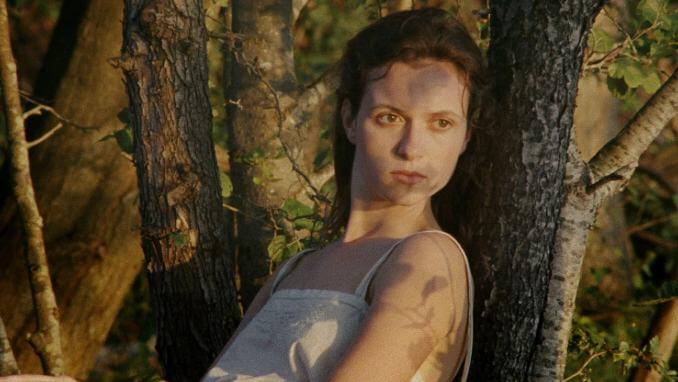Interwar Fairy Tale Scarlet Is Content with and Contained by Its Own Form of Magic

What if there was a fairy tale where magic was not guaranteed, its very existence a matter of quiet suspense? The fairy-tale-adjacent film Scarlet has been described as magical realism, but I don’t think that’s quite right. It’s more about how its heroine finds herself in a situation where, it seems to her, some manner of otherworldly magic is called for, whether it’s technically possible or not. Anyway, the definition of “otherworldly” can get pretty broad when you’re stuck on a farm with minimal family and friends.
Scarlet does not start with that heroine; it begins at the end of World War I, with Raphaël (Raphaël Thierry) returning home from war and discovering that his beloved wife has passed away, leaving behind their daughter Juliette, whose existence was previously unknown to her father and has been raised by Adeline (Noémie Lvovsky), who allows the pair to stay on her land as Raphaël searches for work. His weathered, calloused hands “can do anything,” from construction work to fixing up an old piano to hand-crafting wooden toys; Thierry resembles a more imposing John C. Reilly, with a more pronounced brow, and becomes something of a willfully misunderstood monster to the nearby townspeople. Similarly, his daughter’s classmates call her a witch; later, someone mockingly calls her Red Riding Hood. It’s not only hopeful dreamers who are seeing these lives in fairy-tale terms.
Director Pietro Marcello (Martin Eden) imitates old-time stories with his form, like the way time in his story passes suddenly and inescapably, the editing equivalent of a casual “many years passed” in prose. In one of these cuts, Juliette (Juliette Jouan) grows into a confident and lovely young woman, foretold to escape this place by an older lady (Yolande Moreau) who may or may not be an actual witch. It is around this point that Marcello allows the movie to waft into prettier, more painting-like skies. Juliette sings like a lost princess, and performs several original songs in full. In the film’s most breathtaking image, she sits on a tree branch by a lake, as a bathing man in the distance swims toward her, all captured in glorious 16mm grain.
-

-

-

-

-

-

-

-

-

-

-

-

-

-

-

-

-

-

-

-

-

-

-

-

-

-

-

-

-

-

-

-

-

-

-

-

-

-

-

-








































